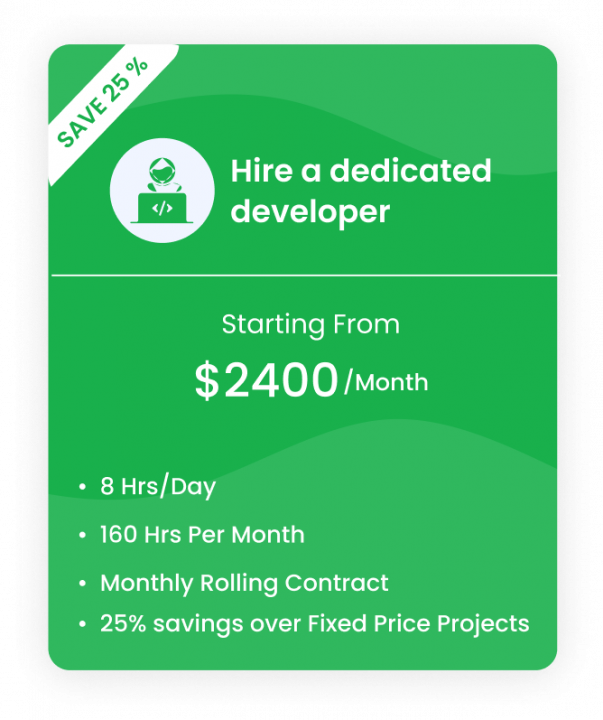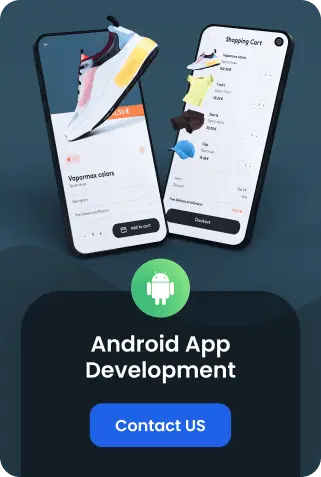Shopify is a popular eCommerce platform that has gained immense popularity in recent years due to its user-friendly interface, powerful features, and numerous integrations. It offers a wide range of customizable templates and themes, making it easy for users to create a unique online store that reflects their brand. Whether you are a small business owner or an entrepreneur looking to start an online business, Shopify is the perfect solution for creating an attractive and functional eCommerce store.
Additionally, Shopify provides robust support and a vibrant community, allowing users to find help quickly and share best practices. With its comprehensive analytics and reporting tools, businesses can track their performance and make informed decisions to drive growth. Payment processing is also straightforward with Shopify, as it supports multiple payment gateways and currencies, ensuring a seamless shopping experience for customers worldwide.
Why Choose Shopify For Online Store Development?
There are several eCommerce platforms available in the market. However, Shopify stands out for many reasons. Its user-friendly interface, extensive customization options, and robust support system make it a top choice for businesses of all sizes. Additionally, Shopify offers seamless integration with various third-party apps, enhancing the functionality and overall user experience.
1. Allow International Expansion
One of the significant advantages of using Shopify is its ability to support multiple currencies and languages, making it easier for businesses to expand globally. With its built-in language translation feature, merchants can reach customers in their native language, breaking down communication barriers and increasing sales.
Moreover, Shopify’s geo-targeting feature allows businesses to cater marketing efforts according to specific regions, ensuring a more personalized shopping experience for customers.
2. Sell In-store and Online With Ease
With Shopify’s point-of-sale (POS) system, businesses can integrate their physical store with their online store. This feature allows merchants to track inventory levels, sales, and customer information across all channels in one place.
Moreover, the POS system is compatible with different hardware options, such as barcode scanners and receipt printers, making it easy for businesses to manage both their online and in-store operations seamlessly.
3. Shipping Carrier Integrations
Managing shipping can be a tedious task for any eCommerce business, involving numerous steps from order processing to packaging and dispatching. However, Shopify offers seamless integrations with various shipping carriers, such as USPS and UPS, making it easier for merchants to manage their shipping processes. These integrations allow for automatic tracking updates and real-time shipping rate calculations, streamlining the workflow for businesses.
Furthermore, Shopify’s partnership with these carriers allows businesses to access discounted rates, saving them money on shipping costs. These savings can be significant, especially for small to medium-sized businesses that are looking to optimize their expenses. Additionally, Shopify provides tools for creating shipping labels, managing returns, and even setting up custom shipping rules to cater to specific business needs. This comprehensive approach helps merchants focus more on their core business activities while ensuring a smooth and cost-effective shipping experience for their customers.
4. Shopify Reports & Analytics
Data is crucial for any business, and Shopify offers comprehensive reporting and analytics tools to help merchants understand their performance across various metrics. These reports provide insights into sales, traffic, customer behavior, and inventory levels, allowing businesses to make data-driven decisions.
Moreover, Shopify provides the option to customize these reports according to specific business needs. This feature allows businesses to track the performance of new product launches or marketing campaigns in real time. Additionally, by integrating with Google Analytics, merchants can gain a more in-depth understanding of their website traffic and user behavior.
5. Accelerated Checkout Options
In today’s fast-paced world, customers expect a seamless and hassle-free checkout experience. With Shopify, businesses can offer their customers various convenient checkout options, such as one-click checkout, guest checkout, and mobile wallet payments.
These accelerated checkout options not only save time for customers but also reduce cart abandonment rates for businesses. Additionally, merchants can customize the checkout process to collect necessary information from customers while still providing a quick and easy purchasing experience.
Also Read: A Beginner’s Guide To Turning Your Shopify Store Into A Mobile App
Shopify Usage, Sales, & Revenue Statistics – Notable Facts and Figures
- As of 2021, over 1.7 million merchants use Shopify as their primary e-commerce platform.
- In the fourth quarter of 2020, Shopify’s revenue grew by 94% year-over-year, reaching $977.7 million.
- The total sales on Shopify during Black Friday and Cyber Monday in 2020 were worth $5.1 billion, a significant increase from $2.9 billion in the previous year.
- Over the past year, Shopify has seen a significant increase in new stores created and an influx of businesses transitioning to online selling due to the COVID-19 pandemic.
- Businesses using Shopify have collectively made over $307 billion worth of sales since its inception in 2006.
What Can You Do With Shopify?
With Shopify, businesses can create and customize their online storefronts, manage their inventory, process orders and payments, track sales and customer data, and market their products through various channels. It also offers integrations with popular tools such as Google Analytics, Facebook Pixel, and Mailchimp to help merchants understand and optimize their online business. Additionally, Shopify provides robust shipping and fulfillment solutions for businesses selling physical products. Overall, Shopify offers a comprehensive e-commerce platform that empowers businesses of all sizes to succeed in the online marketplace. So whether you are a small business just starting out or an established brand looking to expand your online presence, Shopify has everything you need to run a successful online store. With its user-friendly interface, extensive features, and reliable support, Shopify continues to be the go-to choice for businesses looking to thrive in the ever-growing world of e-commerce.
1. Can Sell Your Products Online With Ease
One of the main reasons why Shopify has become so popular is its ease of use for online selling. The platform offers a user-friendly interface with drag-and-drop capabilities, making it easy for even non-technical users to create and customize their online store. Additionally, Shopify provides various templates and themes to choose from, allowing businesses to create a visually appealing and professional-looking storefront without the need for extensive design knowledge or resources. Furthermore, Shopify’s payment processing system makes it seamless for businesses to accept payments from customers, whether through credit cards, PayPal, or other methods. Overall, with Shopify’s intuitive tools and features, anyone can create an online store and start selling products in no time.
2. Can Manage Your Business from Anywhere
Another advantage of using Shopify is its mobile-responsive nature, allowing businesses to manage their online store from anywhere. With the Shopify mobile app, business owners can easily add and edit products, fulfill orders, track sales, and communicate with customers while on the go. This flexibility makes it easier for businesses to stay connected with their store and customers at all times, which is crucial in today’s fast-paced e-commerce landscape.
3. Can Market Your Business Effectively
Apart from creating an online store, Shopify also offers various marketing tools to help businesses promote their products and reach a wider audience. With features like SEO optimization, social media integration, and email marketing capabilities, businesses can easily market their products and attract potential customers. Moreover, Shopify’s analytics dashboard provides valuable insights into sales and customer behavior, allowing businesses to make data-driven decisions for better marketing strategies.
Things To Do Before You Start An Online Store With Shopify
Now that we have discussed the benefits of using Shopify, it’s important to note that building a successful online store requires more than just signing up for the platform. Here are some essential things to do before you start an online store with Shopify:
- Identify your target audience and niche: Before creating your online store, it’s crucial to determine who your target audience is and what products you want to sell. This will help you tailor your website design, product selection, and marketing strategies to attract the right customers.
- Create a business plan: Developing a solid business plan will help you define your goals, identify potential challenges, and come up with strategies for success.
- Choose a memorable domain name: Your domain name is essentially your brand identity, so choose something that is easy to remember and reflects your business.
- Design your website: With Shopify’s user-friendly interface and various customizable templates, designing a visually appealing and functional website is easy. Make sure to keep the design consistent with your brand image and optimize it for mobile users as well.
- Add your products: Once you have designed your website, it’s time to add your products. Be sure to include high-quality images, detailed product descriptions, and pricing information.
Steps To Build and SetUp E-commerce Website With Shopify
1. Set up Your Online Store:
To start an online store with Shopify, you’ll need to first sign up for an account and choose a monthly plan that best suits your business needs. Shopify offers several plans, each with different features and pricing, so it’s important to evaluate which one aligns with your goals. Once you have completed the signup process, you can begin setting up your website. This involves selecting a theme, customizing your storefront, and adding products. Be sure to optimize your product descriptions and images to attract customers. Additionally, you can set up payment gateways and shipping options to ensure a smooth transaction process for your customers.
Step 1: Log In To Your Store
Once you have created your account, log in to your Shopify store using your registered email and password. If you encounter any issues during the login process, you can reset your password through the “Forgot Password” link. After successfully logging in, navigate to your dashboard to start setting up your online store, customizing your theme, and adding products.
Step 2: Password-Protect Your Store
To protect your store from unauthorized access, you can enable password protection in your Shopify settings. This feature will require visitors to enter a password to view your website, ensuring that only select individuals can access it before its official launch. By setting up password protection, you have the opportunity to make final tweaks and adjustments, conduct private beta tests, or generate anticipation amongst a limited audience until you are ready to launch it publicly. This added layer of security helps maintain control and privacy during the crucial pre-launch phase.
Moreover, password protection can also be used to give exclusive access to certain customers, such as loyal patrons or early adopters, providing them with a sneak peek of new products or services. This can help build a sense of exclusivity and foster stronger customer relationships. Additionally, it allows you to gather valuable feedback from a smaller, controlled group, helping you identify and resolve any issues before going live. Overall, enabling password protection is a strategic move that supports a smooth and successful launch, ensuring your store is polished and ready for the public eye.
Step 3: Name Your Store and Set Your Legal Business Name & Address
Before launching your store, it is important to give it a unique and memorable name that accurately reflects your brand and business. This will serve as your online identity and help differentiate you from competitors. Your store name should be easy to spell, pronounce, and remember, making it easier for customers to find and return to your store.
In addition to a store name, you will also need to set up your legal business name and address in your Shopify settings. This information is essential for tax purposes and will appear on all invoices, receipts, and shipping labels. Furthermore, providing this information adds credibility and legitimacy to your store, instilling trust in potential customers.
Step 4: Add Your Billing Information
To officially launch your store, you will need to add your billing information. This includes a valid credit card or other accepted payment method for paying your monthly subscription fees and any additional charges incurred through app purchases or domain registration.
Additionally, you can set up alternative methods of payment such as PayPal or Shopify Payments. These options allow customers to pay with their preferred method, making the purchasing process more convenient and streamlined.
It is important to regularly review and update your billing information to ensure uninterrupted service and avoid any potential disruptions to your store’s operations.
Step 5: Set the Default Currency for Your Store
When setting up your store, you will need to choose the default currency for all product prices and transactions. This is typically the currency used in your primary market or where your business is located.
However, if you are targeting international customers, it may be beneficial to offer multiple currency options to accommodate their preferences. Shopify allows for automatic conversion of currencies based on current exchange rates, making it easier for customers to make purchases without worrying about conversions.
Step 6: Set a Default Weight Unit for Your Store Listings
If your business involves selling physical products, setting a default weight unit is essential. This ensures that accurate shipping rates can be calculated for each product and reduces the risk of overcharging or undercharging customers.
Shopify offers a variety of weight units to choose from, including pounds (lbs), kilograms (kg), ounces (oz), grams (g), and more. Choose the most commonly used unit in your market or industry for consistency and ease of use.
Step 7: Set up Your Shipping Settings
Shipping is an important aspect of any ecommerce business. It can impact customer satisfaction, cost effectiveness, and overall profitability.
Shopify offers a variety of shipping options to fit the needs of different businesses. You can set up flat rate or weight-based shipping, offer free shipping for certain products or order amounts, and even integrate with third-party shipping carriers for discounted rates.
It is important to carefully consider your product dimensions and weight when setting up your shipping settings. This will ensure accurate rates are calculated for each order and avoid any potential losses from overcharging customers.
Step 8: Set up Shopify Markets, if Applicable
If you plan on selling your products in multiple markets or countries, Shopify provides an option to set up separate stores for each market. This allows for more localized marketing and pricing strategies.
You can also use the built-in language translation feature to provide a seamless shopping experience for customers in different languages. Additionally, you can set up multiple currencies and allow for automatic currency conversion based on current exchange rates.
Step 9: Set up Pickup and Local Delivery
Another convenient feature offered by Shopify is the ability to set up pickup and local delivery options for customers. This is especially useful for businesses with physical storefronts or those offering local services.
You can specify pickup locations and times, and even offer different pricing options for local delivery based on distance. This adds a level of convenience for customers and can help attract more local business.
Step 10: Set up Your Taxes
Shopify offers a reliable and secure way to handle taxes for your business. You can set up tax rates based on location, product type, or even customer group.
It is important to carefully research and understand the tax laws in your operating locations to ensure accurate tax collection and reporting. Shopify also provides automated tax calculations and filing options for added convenience.
Step 11: Set up Your Payment Gateways
Shopify offers a variety of payment gateway options, including PayPal, Stripe, and Shopify Payments. You can also set up manual payments such as cash or check.
It is important to consider the fees associated with each payment gateway and choose the most cost-effective option for your business. Some gateways may also require additional steps for setting up, so be sure to follow their specific instructions carefully.
Step 12: Staff Your Store, if Applicable
If you have employees helping with your online store, you can easily add them as staff members on Shopify. You can set different permissions and access levels for each staff member to control what they can do within the platform.
This feature allows for smooth collaboration and delegation of tasks, making it easier to manage your business.
Step 13: Set up Your Domain
Your domain is your online address and the name of your business. It serves as the digital identity that customers associate with your brand. Shopify allows you to purchase a custom domain or connect an existing one to your store seamlessly.
Having a professional and memorable domain name can help establish your brand and make it easier for customers to find you. A well-chosen domain name enhances your online presence and visibility. It also adds credibility and trustworthiness to your business, making customers more likely to engage with and purchase from your store. Furthermore, a unique domain name can improve your search engine ranking, helping you attract more organic traffic. Investing in a good domain name is a crucial step in building a successful online business.
Read More: Shopify Theme UX Essentials: Tips for Creating an Intuitive User Experience
2. Organize Your Online Store
Now that you have set up your online store, it’s time to organize it in a way that is visually appealing and user-friendly for customers. Here are some key steps to follow:
Step 1: Setup and Customize Your Theme & Make Your Website Look Great
Shopify offers a wide selection of themes that you can choose from to design your online store. These themes are professionally designed and customizable, allowing you to create a unique look for your website. You can also add custom images, logos, and branding elements to further personalize your store.
When choosing a theme, consider the overall aesthetic of your brand and make sure it aligns with your target audience’s preferences. A visually appealing website can attract customers and keep them engaged while browsing through your products.
Step 2: Add and Organize Your Products Into Collections
Collections are a way to group similar products together, making it easy for customers to navigate your store. You can create collections based on product type, category, or seasonality. This organization not only makes it easier for customers to find what they are looking for but also allows you to showcase specific products and promotions.
Additionally, make sure to include high-quality images and detailed product descriptions for each item in your collection. This will give customers a better understanding of the product and increase their likelihood of making a purchase.
Step 3: Customize Your Menu and Navigation
Your website’s menu and navigation are essential for guiding customers to different sections of your store. Make sure to organize your menu in a logical and intuitive way, with clear labels that accurately represent the content within each section.
You can also use dropdown menus or subcategories to further categorize your products and make it easier for customers to find what they are looking for. Additionally, consider adding search functionality so that customers can quickly find specific products or keywords.
Step 4: Add a Blog to Your Store
Blogs are a great way to attract and engage customers. You can use your blog to share updates about your store, promote new products or collections, and provide valuable information or tips related to your industry. For example, if you own a clothing store, you could write about the latest fashion trends, offer styling advice, or highlight customer testimonials.
Make sure to post regularly and keep the content relevant and engaging. Consistency is key; a steady flow of fresh content keeps your audience interested and coming back for more. You can also use keywords in your blog posts to improve your website’s search engine optimization (SEO) and drive more traffic to your store. Including high-quality images and videos can further enhance your blog, making it more appealing and shareable on social media platforms.
3. Test Your Online Store & Prepare It for Launch
After completing all the necessary steps for setting up your online store, it’s essential to test and make any final adjustments before launching. Here are some things to consider:
Step 1: Check Your Website’s Functionality
Make sure that everything on your website is functioning correctly. Test out all links, buttons, forms, and other features to ensure they are working as intended.
Also, check the responsiveness of your site on different devices and browsers. With more people accessing websites through their mobile devices, it’s crucial to have a responsive design that provides a seamless experience across all devices.
Step 2: Review Your Payment Process
Double-check that your payment process is smooth and secure. Test different payment options such as credit cards, PayPal, and other available methods to make sure they are working correctly.
You should also consider setting up a test order to see how the process looks from the customer’s perspective. This will help you identify any potential issues or areas for improvement before your official launch.
4. Launch Your Shopify Online Store
Once you have completed all the necessary steps, including designing your layout, adding products, and setting up payment gateways, and are satisfied with your website, it’s time to launch your Shopify online store. Ensure your layout is user-friendly and visually appealing, and that product descriptions and images are clear and comprehensive. Make sure to double-check all your settings, test the user experience by navigating the website as a customer would, and ensure that everything is running smoothly before going live. Additionally, consider setting up analytics tools to monitor traffic and sales, and prepare a marketing plan to attract your first customers. Launching a store is just the beginning, so be ready to continuously improve and adapt to feedback for ongoing success.
5. Add Other Online Sales Channels
While having a dedicated online store is crucial for establishing your brand and providing a central hub for customers, it’s also essential to explore other avenues for selling your products to maximize your reach and revenue potential. Shopify offers seamless integrations with a variety of sales channels, including major platforms like Amazon, eBay, and Facebook. These integrations allow you to tap into the vast user bases of these platforms, opening up new opportunities to connect with potential customers who may not have found your online store otherwise.
Moreover, these integrations enable you to manage all your sales from different channels in one centralized location, making it significantly easier to track inventory, process orders, and handle customer interactions efficiently. With everything streamlined in one place, you can focus more on strategizing and expanding your business rather than getting bogged down by administrative tasks. Leveraging these multi-channel sales opportunities can lead to higher visibility, increased brand awareness, and ultimately, a boost in sales and customer satisfaction.
6. Promote Your Online Store
Once your online store is up and running, it’s time to spread the word and attract customers. While having an online presence is a crucial first step, it won’t do much if people don’t know about it. That’s where marketing comes in. To effectively promote your online store, you’ll need to develop a solid marketing plan that leverages various channels and tactics to reach your target audience.
Some effective strategies for promoting your online store include:
- Utilizing social media platforms like Instagram, Facebook, Twitter, and Pinterest to showcase your products and engage with potential customers.
- Creating compelling content through blogging or guest posting on relevant websites to establish yourself as an expert in your industry and drive traffic to your store.
- Collaborating with influencers or partnering with other businesses to reach a wider audience and gain credibility.
- Utilizing email marketing to stay in touch with your customers and keep them updated on new products, promotions, and discounts.
- Implementing search engine optimization (SEO) techniques to improve your website’s ranking on search engine results pages.
- Offering special promotions or discounts for first-time customers or creating loyalty programs to retain existing ones.
Cost To Build and Start Online Store With Shopify
Starting an online store with Shopify involves several costs, which can vary based on your specific needs and preferences. Here are some of the primary expenses you should expect:
- Shopify Subscription Plans: Shopify offers several pricing tiers to accommodate different business sizes and needs. The basic plan starts at around $29 per month, the Shopify plan is $79 per month, and the Advanced Shopify plan costs $299 per month. Each plan includes various features that scale with your business, such as more advanced reporting tools and lower transaction fees.
- Domain Registration: To give your online store a professional appearance, you will need a custom domain name. The cost for registering a domain typically ranges from $10 to $20 per year.
- Themes and Design: While Shopify offers free themes, you might want a premium theme for enhanced aesthetics and functionality. Premium themes usually cost between $140 and $180.
- App Integrations: Depending on the functionalities you need, you may want to integrate third-party apps. While there are many free apps available, premium apps can cost anywhere from $5 to $50 per month, depending on their complexity and features.
- Payment Processing Fees: Besides the monthly subscription fee, Shopify charges a transaction fee for each sale made, ranging from 2.4% + 30¢ to 2.9% + 30¢ per transaction, based on your subscription plan. Using Shopify Payments can help you avoid additional fees.
- Marketing and Advertising: To drive traffic to your online store, you will likely need to invest in marketing. This can include pay-per-click (PPC) advertising, social media ads, and email marketing campaigns. Budgets for marketing can vary widely, but a good starting point might be $100 to $500 per month.
- Logo and Branding: Creating a professional logo and brand materials can either be done using free tools or by hiring a designer. Hiring a professional designer can cost anywhere from $100 to $500, depending on their expertise and the scope of the project.
Suggested: Cost to Develop eCommerce App for Android & iOS
Why To Hire Shopify Developers?
While setting up an online store on Shopify is relatively easy, you may want to consider hiring a Shopify developer to help you maximize the platform’s capabilities. Here are some reasons why hiring a Shopify developer can be beneficial for your business:
- Customization and Personalization: A Shopify developer has the technical skills and knowledge to customize your store’s design, theme, and functionalities according to your specific needs and preferences. This will help make your online store unique and stand out from competitors.
- Expertise in Coding: If you have little or no experience with coding, it can be challenging to make changes or troubleshoot issues on your online store. Hiring a Shopify developer who is well-versed in coding can save you time and effort, ensuring that your store is running smoothly.
- Integrations and Apps: Shopify has a wide range of apps and integrations that can enhance the functionality of your online store. A Shopify developer can help you choose and integrate the right apps for your business, making it easier for you to manage your store.
- SEO Optimization: Search Engine Optimization (SEO) is crucial in driving traffic to your online store. A Shopify developer can optimize your website for SEO, improving its visibility and ranking on search engines like Google.
- Technical Support: If you encounter any technical issues or have questions about using the platform, a Shopify developer can provide valuable support and guidance. This will save you time and frustration in trying to troubleshoot problems on your own.
- Ongoing Maintenance and Updates: As your business grows and evolves, you may need to make changes or updates to your online store. A Shopify developer can handle these tasks for you, ensuring that your website is always up-to-date and functioning properly.
How to Hire Shopify Developers?
When it comes to hiring a Shopify developer, here are some steps you can follow:
- Identify your needs: Before starting your search for a Shopify developer, determine what specific tasks or projects you need assistance with. This will help you find candidates with the right skills and experience.
- Browse through Shopify Experts: Shopify has a directory of certified experts who are experienced in developing and designing online stores on their platform. You can browse through this directory and filter by location, language, and skills to find potential candidates.
- Consider outsourcing companies: If you’re looking for a more cost-effective option or have a larger project, consider hiring an outsourcing company that specializes in Shopify development. These companies often have multiple developers with different skill sets and can provide ongoing support for your website.
- Review portfolios and experience: When considering candidates, make sure to review their portfolios and past experience. Look for examples of websites they have developed on Shopify and read client testimonials to get a better idea of their skills and capabilities.
- Communicate effectively: Communication is key when working with a developer, so make sure you are able to clearly communicate your needs and expectations. Ask questions, clarify any confusion, and set clear deadlines for projects.
- Negotiate rates and contracts: Before finalizing an agreement with a Shopify developer, discuss rates and payment terms. Make sure both parties are clear on the scope of work, timelines, and any additional fees that may arise.
Why Choose iTechnolabs For Shopify Website & Mobile App Development?
At iTechnolabs, we have a team of experienced Shopify developers who are dedicated to delivering high-quality and customized solutions for your e-commerce business. Our expertise in Shopify app development combined with our commitment to customer satisfaction makes us the ideal choice for your website and mobile app development needs.
Here are some reasons why you should choose iTechnolabs for Shopify development:
- Expertise: Our team has extensive experience in developing websites and mobile apps on the Shopify platform. We stay up-to-date with the latest trends and developments in e-commerce, ensuring that our solutions are modern, efficient, and effective.
- Customization: We understand that every business is unique, which is why we offer customized solutions tailored to your specific needs. We work closely with our clients to understand their requirements and deliver a personalized solution that meets their goals.
- Affordability: We offer competitive rates for our Shopify development services, making them accessible for businesses of all sizes. We also provide transparent pricing, so you know exactly what you’re paying for.
- Communication: Effective communication is crucial in any business relationship, which is why we prioritize clear and timely communication with our clients. We make sure to involve our clients in every step of the development process to ensure their needs are met.
- Quality Assurance: Our team follows best practices and uses rigorous quality assurance processes to ensure that our solutions are of the highest quality. We strive for perfection and are committed to delivering flawless websites and mobile apps.
- Support: Our relationship with our clients doesn’t end after the project is completed. We offer ongoing support and maintenance services to ensure that your website or mobile app continues to run smoothly.
- Customer Satisfaction: At iTechnolabs, customer satisfaction is at the core of everything we do. We value our clients’ feedback and work tirelessly to exceed their expectations. Our goal is to build long-lasting relationships with our clients and help them achieve success.
Are you looking for the best Shopify development services?
Contact us!
Choosing iTechnolabs for your Shopify website and mobile app development offers a multitude of benefits that can significantly impact your business success. With our expert team of developers, you gain access to cutting-edge technology and innovative solutions tailored to your specific needs. We ensure seamless integration, user-friendly designs, and robust performance, helping you stay ahead in a competitive market. Whether it’s enhancing your online store or optimizing your mobile presence, iTechnolabs is dedicated to driving your business growth.
- Expertise: Our team of experienced developers possess deep knowledge and expertise in Shopify platform intricacies. This enables us to create robust and scalable solutions tailored to your business needs.
- Innovative Solutions: At iTechnolabs, we are committed to staying abreast of the latest trends and technologies in the e-commerce industry. Our innovative approach ensures that your Shopify store and mobile app stand out in a competitive market.
- Seamless Integration: We excel in integrating various tools and plugins that enhance your Shopify store’s functionality. Whether you need payment gateways, inventory management systems, or marketing tools, we ensure seamless integration to streamline your operations.
- Responsive Design: Understanding the importance of a mobile-friendly interface, we design responsive websites and mobile apps that offer an optimal user experience across all devices. This helps in increasing engagement and conversions from mobile users.
- SEO Optimization: Our development services are complemented by SEO optimization techniques that improve the visibility of your Shopify store. Higher search engine rankings lead to increased traffic and potential sales.
- Timely Delivery: We respect timelines and understand the importance of launching your Shopify store or mobile app as per schedule. Our efficient project management processes ensure timely delivery without compromising on quality.
- 24/7 Support: With iTechnolabs, you gain access to round-the-clock support. Our dedicated customer service team is always available to address any issues, ensuring your online store operates smoothly at all times.
Important: Ultimate Tips to Choose The Best Ecommerce Platforms
Conclusion:
In conclusion, choosing iTechnolabs as your Shopify development partner ensures a seamless and efficient e-commerce experience for both you and your customers. Our team of experts strives to provide the best services and solutions tailored to your business needs. With our innovative approach, seamless integration, responsive design, SEO optimization, timely delivery, and 24/7 support, we are committed to helping your online business thrive in a constantly evolving market. Trust iTechnolabs to take your Shopify store and mobile app to the next level.
Frequently Asked Questions (FAQs)
Can I Migrate My Store to Shopify from Another Platform?
Yes, iTechnolabs offers comprehensive store migration services from various e-commerce platforms such as Magento, WooCommerce, BigCommerce, and more. Our team of experts meticulously plans and executes the migration process to ensure a smooth transition. We take great care to avoid any loss of data or functionality, ensuring that your store remains fully operational throughout the migration. Additionally, we provide post-migration support to address any issues that may arise, helping you to maintain seamless business operations.
Can I Start Dropshipping with Shopify?
Yes, Shopify offers an easy and convenient way to set up a dropshipping business. By integrating with popular drop shipping platforms like Oberlo or Sprocket, you can easily source products from suppliers and sell them on your online store without having to manage inventory or handle shipping. iTechnolabs can assist you in setting up your dropshipping store on Shopify, providing guidance and support throughout the process.
Can I Develop a Mobile App with Shopify?
Yes, Shopify offers a mobile app development platform that allows you to create a custom mobile app for your store. The app can be integrated with your Shopify store, providing customers with a seamless shopping experience on their mobile devices. iTechnolabs has extensive experience in developing and integrating Shopify mobile apps, and we can help you create a user-friendly and feature-rich app for your business.
How Much Time Does It Take to Develop a Website with Shopify?
The time it takes to develop a website with Shopify depends on various factors such as the complexity of your store, customization requirements, and integrations with third-party apps or services. Generally, a basic Shopify website can be set up in a few hours, while more complex websites may take a few days or weeks. iTechnolabs has a team of experienced developers who can efficiently build and launch your Shopify website within your desired timeframe.
Can I Build a Shopify Website on My Own?
Yes, Shopify offers a user-friendly website builder that allows you to create your website without any coding knowledge. However, if you want to customize your store or integrate advanced features, it is recommended to seek professional help. iTechnolabs can provide you with expert guidance and support in building a professional and high-performing Shopify website.






